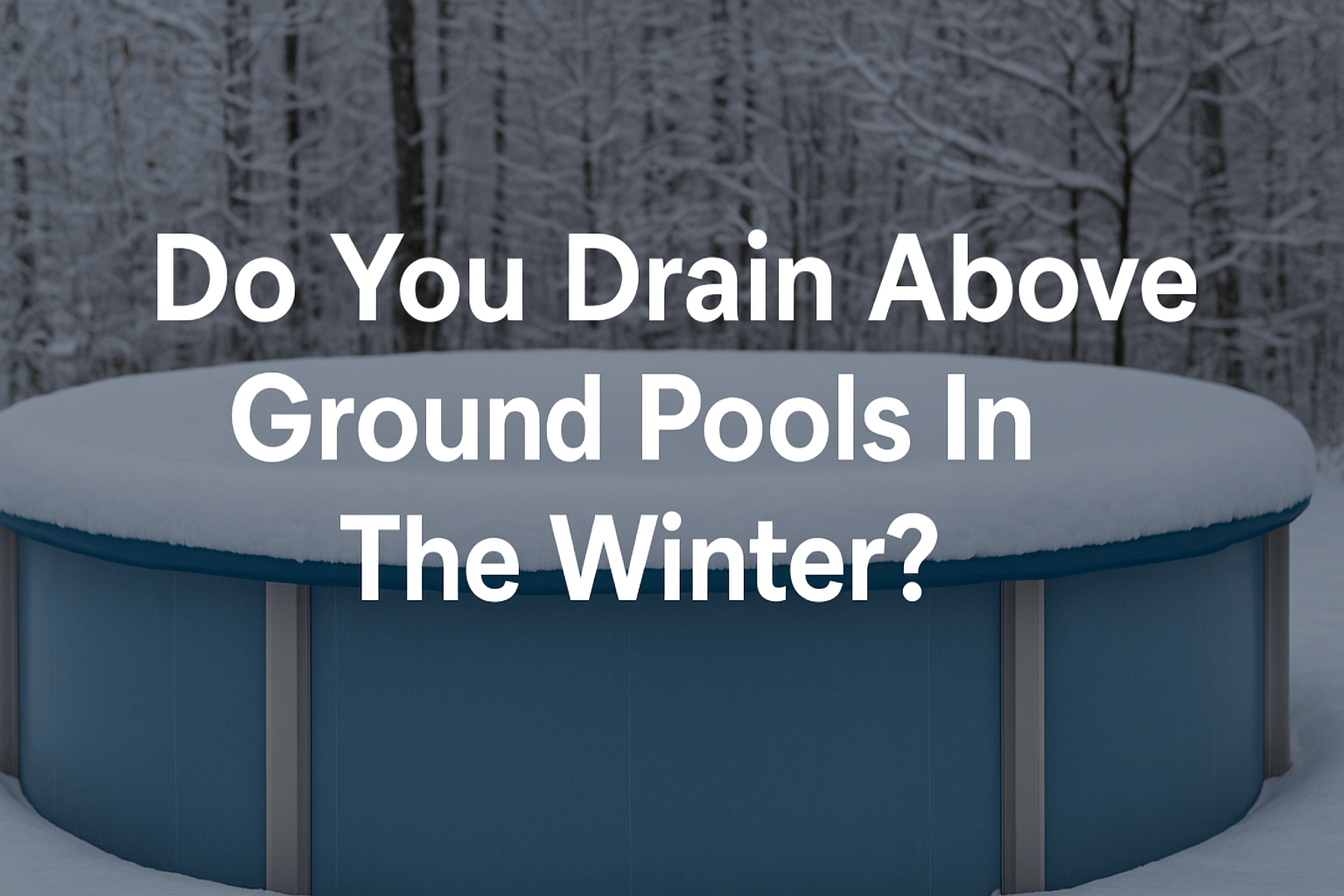
Do You Drain Above Ground Pools In The Winter?
Thinking of pulling the plug on your pool this winter? Hold that hose!
The short answer: no, don’t fully drain your above ground pool.
Even the best above ground pools need some water left inside to survive the cold. Fully draining might seem like the safe choice—but it can actually do more harm than good.
Here’s why leaving a bit of water in is your pool’s best winter coat.
Why Complete Draining is Not Recommended
As tempting as it is to start fresh for spring, draining your pool entirely could turn a small job into a major repair.
Structural Integrity: Water Weight Supports Walls and Liner
Think of the water as your pool's backbone. Without it, the liner can sag, the walls can shift—and the whole thing becomes unstable. Water holds everything in place, especially when the wind and cold roll in.
Risk of Liner Shrinkage and Damage
Ever left a balloon out in the cold? Your pool liner reacts in a similar way. Once it's drained and exposed, the vinyl can shrink, dry out, and even crack—especially after a hard frost.

Walls Can Buckle, Warp, or Collapse
No water = no support. That lightweight metal frame or resin wall can bow inward under snow loads or high winds. There have been countless cases where winter storms crumpled a fully drained pool like a tin can.
Damage to Pool Base and Leveling
Your carefully levelled base isn’t immune either. Without water, the ground can shift or frost heave over winter. Come spring, you could find a lopsided pool—not exactly the look you’re going for.
Exceptions for Temporary or Inflatable Pools
Of course, not all pools play by the same rules.
Pools Designed for Disassembly and Storage
If you’ve got a blow-up pool from the garden centre or a pop-up model meant for summer-only use, draining is expected. These are made to be packed away neatly in a shed or garage until next year.
Following Manufacturer’s Specific Guidelines for These Types
Still—don’t guess. Check the manual or the manufacturer’s website. They’ll tell you exactly how to prep, dry, and store the parts without damaging them in the process.
The Correct Approach: Partial Draining for Winterisation
When it comes to proper winter prep, it’s all about balance.
Partial draining keeps your pool protected, without stripping away the structural support it needs.

Lowering the Water Level for Protection
Draining just enough water makes a big difference.
Draining Below the Skimmer and Return Jets
Use a submersible pump or hose to lower the water to just under the skimmer and return lines. This keeps those areas from flooding, freezing, and cracking once temperatures drop.
Preventing Freeze Damage to Plumbing and Openings
Water expands when it freezes—and that’s bad news for plastic fittings. Lowering the level prevents ice from forming in pipes and cracking expensive components.
Typical Target Depth
Most pool owners aim for 4–6 inches below the skimmer if you’re using a solid winter cover.
If you’ve got a mesh cover, drain 12–18 inches below the top edge to account for rain and snowmelt over winter.
Protecting the Pool from Ice Expansion
Draining alone isn’t enough. Ice will form—so be ready for it.
Using Air Pillows Under the Winter Cover
Place one or more air pillows under the cover. They act like shock absorbers, taking the pressure off the pool walls when ice expands. Think of them as pool floaties… with a job to do.
Ensuring All Lines and Equipment are Drained and Winterised
Don’t forget your gear. Disconnect hoses, pumps, filters, and heaters. Blow out the lines and keep everything dry and safe indoors where Jack Frost can’t reach.

Benefits of Leaving Water in the Pool
Leaving water in isn’t lazy—it’s smart.
Maintains Liner and Wall Integrity
Water supports the liner, prevents flapping, and stops cold winds from causing creases or tears. It holds the frame steady when the weather turns nasty.
Provides a Base for the Winter Cover
Your winter cover needs something to rest on. Water creates a smooth surface, preventing the cover from sagging or tearing in the middle.
Easier Spring Opening and Less Refilling
Come spring, you’ll be glad you left some water behind. There’s less to refill, fewer chemicals to add, and no need to scrub out winter damage.
Final Thoughts
Winter care doesn’t have to be complicated—but it does have to be done right.
Fully draining your pool might feel like ticking off a to-do list. But the truth? It can lead to headaches come spring.
Stick with a smart partial drain, follow a few simple winterisation steps, and your above ground pool will be ready to dive into when the sun comes back.
Just imagine the first splash of the season—no surprises, no stress, just water and smiles.
Have you checked out our other posts?
Will Above Ground Pool Freeze?
Can You Leave Above Ground Pools Up In The Winter?
Do You Empty An Above-Ground Pool Every Year?



Leave a comment